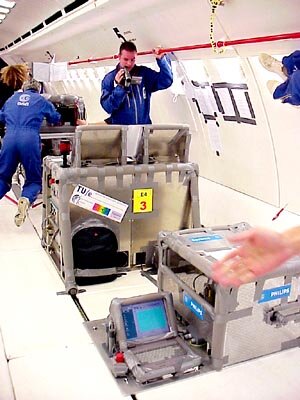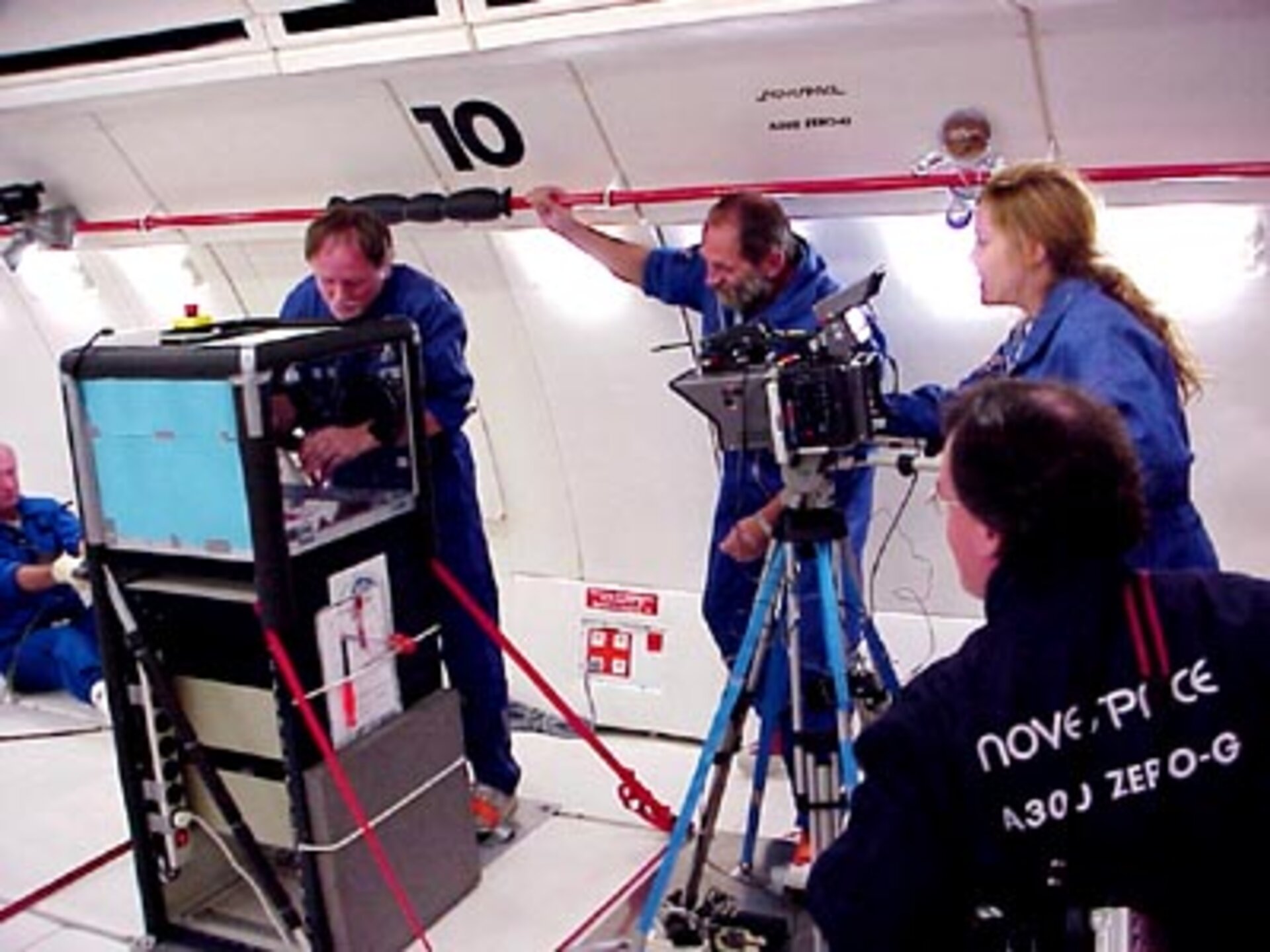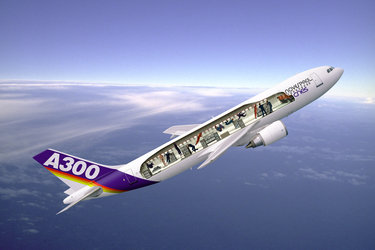35th ESA Parabolic Flight Campaign Day two: the experiments continue
As artifical blood serum bubbled away on a tabletop, experimenters were variously assessing data on laptops, clambering into flight suits, donning polarised glasses to check their 3-D camera's depth field, carrying in some lively rats on a tray and brandishing a set of alarmingly large syringes.
Before the Sun had even risen on Wednesday morning, the Novespace centre on the edge of Bordeaux-Mérignac Airport was a hive of activity. The padded cabin of the nearby A-300 Zero-G Airbus was even busier, as teams finalised their bolted-down experiment rigs for their second date with weightlessness.
All experimenters and equipment were onboard by 09:30 CEST in time for the doors to be fastened. Glinting in the pinkish sunlight, the aircraft taxied slowly across the busy airport and took off on schedule 25 minutes later.
Zero-G engine behaviour
The syringes were not for use on humans, they were part of the equipment needed for a physics experiment by students from the Paris Ecole Centrale and Ecole Normale Superiore. Their subject of focus is the instabilities created when air and liquid mix under pressure – as in the combustion chamber of a diesel motor or rocket engine.
"Normally the liquid forms into droplets and for efficient engines the smaller the droplets the better," explains Jerome Saniez from the Ecole Centrale. "This is a well-studied area, with equations created for it back at the start of the 20th century. However, when the equations were written the assumption was made to disregard gravity as a factor.
"We are using our access to weightlessness to test if gravity does play a role after all, a camera will take 20 pictures a second to measure droplet size and behaviour in different conditions."
This experiment was previously flown on ESA's last Student Parabolic Flight Campaign, but equipment problems stopped them gathering data. The decision was made to give them another chance and this week the team have already taken thousands of pictures for further analysis.
Foam science

Another experiment making a return trip is the Foam Experiment Container. This flew last April and will eventually become part of the International Space Station's Fluid Science Lab.
"Creating foam in weightlessness is a way of learning about basic science issues, such as phase transitions between solids and liquids," says Principal Investigator Arnaud Saint-James of the Paris University Sud. "When dry foam is crammed with bubbles it can get completely jammed – resembling the arrangement of atoms in a solid, but make the foam wetter and the bubbles start moving past each other, like a liquid. We can learn much from studying how this transition takes place.
"Last time we were trying to discover the best techniques of making foam in weightlessness, building on that experience, now we are assessing other elements: handling the samples, emptying and refilling the foam box, and measuring the optical and electrical properties of the foam we make."
His team's design deadline is the end of 2004, when the final Foam Experiment Containers will fly on an ESA Maxus sounding rocket and experience 12 to 13 minutes of weightlessness.
Both droplet and foam experiments reported a successful and leak-free flight when the returning A-300 popped open its doors around 1300 CET.
Build a better lightbulb
Also successful on Wednesday was another second-time experiment from back in April: a joint effort between Eindhoven University and electronics firm Philips, aimed at studying the microgravity and hypergravity behaviour of high-output light bulbs known as High Intensity Discharge (HID) or metal halide lamps.
"Metal halide lamps are often used to illuminate shop windows or city buildings at night, because they are highly energy efficient," comments Professor Gerrit Kroesen of the University of Eindhoven. "But we are prevented from making them even more efficient because of two problems they tend to suffer from, which we still do not fully understand.
"The first is called demixing, which in simple terms means the gases inside the bulb separate so it shines in different colours at either end. The second is called helical instability, which means the bulb starts to flicker. We know both these conditions are influenced by convection currents because they occur vertically.
"The interaction of different factors inside these lamps are extremely complex to understand and model, but by stripping away gravity we can make a start."
The team have spectrometers and other instruments trained on the subject bulbs, but using their own eyes they can see their behaviour is changing along with local gravity. A finalised version of the experiment is also due to fly with ESA astronaut Andre Kuipers next spring.
Thursday will be the final flight day – and if all goes well we will be bringing you an inside report on flying in weightlessness.















 Germany
Germany
 Austria
Austria
 Belgium
Belgium
 Denmark
Denmark
 Spain
Spain
 Estonia
Estonia
 Finland
Finland
 France
France
 Greece
Greece
 Hungary
Hungary
 Ireland
Ireland
 Italy
Italy
 Luxembourg
Luxembourg
 Norway
Norway
 The Netherlands
The Netherlands
 Poland
Poland
 Portugal
Portugal
 Czechia
Czechia
 Romania
Romania
 United Kingdom
United Kingdom
 Slovenia
Slovenia
 Sweden
Sweden
 Switzerland
Switzerland





























